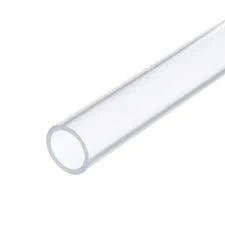វិច្ឆិកា . 01, 2024 01:12 Back to list
High-Density Polyethylene Plate for Versatile Applications and Durable Performance
Understanding HDPE Plates Properties, Applications, and Advantages
High-Density Polyethylene (HDPE) plates are a versatile and popular material used across a wide range of industries. Known for their strength, durability, and resistance to various chemicals, HDPE plates are becoming an increasingly preferred choice in manufacturing, construction, and even in consumer products. This article aims to explore the key properties, applications, and advantages of HDPE plates in everyday and industrial contexts.
Properties of HDPE Plates
HDPE is a thermoplastic polymer that is known for its high strength-to-density ratio. One of the most significant properties of HDPE plates is their excellent impact resistance. This makes them ideal for applications that require robust materials that can withstand physical stress. Additionally, HDPE offers superior resistance to chemicals, moisture, and UV radiation, which means that the plates can be used in outdoor environments without losing their integrity over time.
Another remarkable feature of HDPE plates is their low friction coefficient, which makes them suitable for applications involving moving parts or surfaces that require smooth interactions, such as conveyor systems. Furthermore, HDPE plates can be easily fabricated, cut, and welded, providing versatility in design and application.
Applications of HDPE Plates
HDPE plates have a wide range of applications across various industries. In the food industry, these plates are commonly utilized to create cutting boards, food storage containers, and surfaces for food processing, thanks to their non-porous nature that prevents bacterial growth.
In construction and manufacturing, HDPE plates are used for creating parts for machinery, electrical insulation, and components that require low weight but high strength. Additionally, they are extensively used in agriculture for making tanks, conduits, and various other equipment designed to handle chemicals and fertilizers.
hdpe plate

HDPE plates are also gaining popularity in the marine industry, where they are used for constructing docks and other structures that are resistant to water and corrosive elements.
Advantages of HDPE Plates
The advantages of using HDPE plates are manifold. Firstly, their durability translates into lower maintenance costs over time, making them a cost-effective solution for businesses in the long run. Additionally, the lightweight nature of HDPE makes it easier to handle and transport, contributing to lower shipping costs and faster project timelines.
Moreover, HDPE is fully recyclable, which aligns with the growing focus on sustainability in manufacturing and product development. Using HDPE plates can aid companies in meeting their environmental goals while also benefiting from the inherent properties of this material.
Finally, HDPE plates are available in a variety of colors, thicknesses, and sizes, allowing for customization according to specific project requirements.
Conclusion
In summary, HDPE plates are a reliable and efficient option for numerous applications due to their exceptional properties, versatility, and eco-friendliness. As industries continue to evolve and the demand for durable, sustainable materials rises, HDPE plates are poised to remain an integral part of various applications, facilitating innovative solutions in manufacturing, construction, food processing, and beyond.
-
High-Quality PPR Pipes and Fittings Durable ERA PPR & PVC PPR Solutions
NewsJul.08,2025
-
Black HDPE Cutting Board - Durable, Non-Porous & Food Safe HDPE Plastic Cutting Board
NewsJul.08,2025
-
High-Quality CPVC Panel Durable HDPE & PVC Panels Supplier
NewsJul.08,2025
-
Double PE Welding Rod Supplier - High Strength, Durable & Versatile Welding Solutions
NewsJul.07,2025
-
High-Quality PVC-O Pipe Supplier Durable 75mm PVC Pipe & Connections Leading PVC Pipe Company
NewsJul.07,2025
-
HDPE Drainage Pipe Supplier – Durable & Corrosion-Resistant Solutions
NewsJul.06,2025

